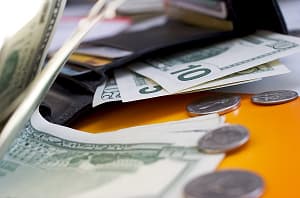Pound sterling rose against the US dollar (GBP/USD) by about 0.7% this morning, after the consolidation path it was following during the early hours of this morning.
The pound’s gains today came despite the bleak GDP figures, but a noticeable acceleration in retail sales growth contributed to offset the impact of the negative data, in addition to some recovery in bond yields after the negative opening.
Today we saw third quarter gross domestic product (GDP) figures that were weaker than expected. GDP contracted by 0.1% during the third quarter compared to the second quarter, which was worse than expectations of no change, which is also represents the worst quarterly performance since the third quarter of last year.
Compared to the same period last year, GDP recorded a growth rate lower than expected at 0.3%, which was below the expected rate of 0.6% and represented the slowest pace of growth since the first quarter of this year.
In sectors, services contracted by 0.1% on a quarterly basis, with the outputs of 8 out of 14 subsectors declining. While the greatest pressure on services came from a contraction in real estate activities by 0.4%, with buying, selling and renting also declining by 1.6%. Add to this a decline of 1.2% for the transportation and storage subsectors.
While production did not witness any growth in the last quarter, manufacturing outputs grew by 0.1%, with growth in 7 out of 3 sectors partially. This was supported by the transportation equipment production subsectors, which in turn recorded the fourth consecutive quarter of growth.
Construction output also witnessed a growth of 0.1% in the last quarter, supported by a 0.7% growth in repair and maintenance, compared to a 0.3% contraction in new work.
Business investments witnessed a decline for the first time from the first quarter during the third quarter by 3.2% compared to the second quarter.
Household spending also decreased by 0.4% in the third quarter, with a decrease in spending on miscellaneous goods and services such as social protection and jewelry, in addition to transportation, food, and non-alcoholic beverages. Add to this the decline in spending on tourism.
Not far from household spending, retail sales witnessed a remarkable growth greater than expected last November. It recorded annual growth of 1.3%, which was higher than expectations of 0.3% and represents the fastest growth pace since April of last year.
On a monthly basis, it recorded a slight growth of 0.1%, but this reading was the first positive reading during this year and the highest since March of last year.
While this increase in retail sales came mainly from the strong growth in sales of non-food stores by 0.9% on a monthly basis and 0.3% and 0.1% for food stores and gas stations. While the largest growth in turn came from the increase in sales of home furniture and lighting stores.
Despite the GDP numbers that suggest the fragility of the British economy, the sudden growth in retail sales suggests the continued ability of households to spend, event with the record high interest rates and difficult labor market conditions.
Also, if retail sales continue to rise, this may ensure that the financial banking system maintains its strength and reduces fears of being dragged into recession.
We should not forget that previous retail sales figures exclude seasonal changes that come with events and holidays, such as Black Friday sales, which in turn may confirm that this growth in retail sales may not be fleeting.
The continued trend of retail sales growing faster than expected may encourage the Bank of England to maintain current interest rates for a longer period than expected as well, and it remains in light of the prevailing bullish concerns for inflation, which also coincides with the potential disruption to international shipping traffic in the Red Sea, which may lead to the return of the disturbances. in supply chains and pressure on prices to rise.
In the bond market, a slight rebound in British gilt yields today after a negative opening also helped support the pound’s gains. The yield on ten-year gilt reached 3.549% after falling to 3.506% at the beginning of today’s trading, which is slightly close to the lowest levels since last April that we witnessed yesterday.
British gilts are heading to erase all of their gains this week, with the noticeable decline of the iShares Core UK Gilts UCITS ETF (IGLT) to its lowest level since last Friday at 10.4500 pounds.







Leave a Comment